Arithmetic Sequence Worksheet Answers. The picture beneath shows the linear sequence 1, 6, eleven, sixteen, 21. There will be students in your class who require individual consideration to help them succeed in their maths GCSEs. Use the common difference technique to determine the sequence that forms an arithmetic development. What is the Difference Between an Arithmetic and Geometric Sequence?
There might be students in your class who require particular person attention to assist them succeed of their maths GCSEs. Highest customer evaluations on one of the highly-trusted product evaluation platforms.

The image under exhibits the linear sequence 0, 4, 8, 12, 16. B) Find a30 given that the first few phrases of an arithmetic sequence are given by 6,12,18,…
Equation Of Line Worksheet
Find the lacking values within the sequence -6, …, …, three, …. Fill in the missing terms in the sequence 5, eight, …, …, 17. Repeat Steps 2 and three until all missing values are calculated.

The first linear sequence has a standard distinction of positive four. The second linear sequence has a standard distinction of optimistic 5. See quadratic sequences to learn how to interpret quadratic sequences.
Arithmetic Sequence Word Issues Worksheets
On the other hand, sequence B isn’t an arithmetic sequence. There’s no frequent distinction among the many pairs of consecutive terms within the sequence. Problem 3 An arithmetic sequence has a common difference equal to 10 and its 6 th time period is the identical as 52.

Business, legal, tax in addition to different digital documents need a high stage of safety and compliance with the legislation. Our documents are regularly up to date in accordance with the latest legislative modifications.
Instance 12: Generate An Arithmetic Sequence With Algebraic Terms
Use the frequent distinction technique to determine the sequence that forms an arithmetic progression. These pdf worksheets are highly beneficial for school students within the eighth grade and high school.

Subtract the frequent difference to the time period after a missing value. Calculate the frequent difference between two consecutive terms. Add the frequent distinction to the last quantity in the sequence to search out the following term.
Arithmetic Sequence Practice Problems With Solutions
Sequences are relevant if we look for a pattern that aids in acquiring the final term. Real-life examples include stacking cups, chairs, bowls, and pyramid-like patterns where objects are rising or reducing in a continuing method. In order to learn or obtain 9 2 arithmetic sequences reply key form e-book, you want to create a FREE account.
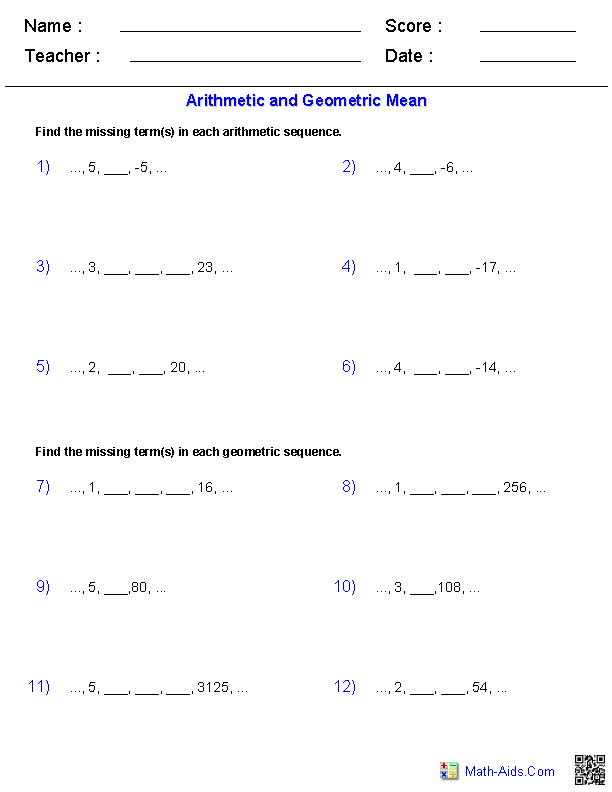
Substitute the value for n into the nth time period of the sequence 3n − three. Add the common distinction to the time period earlier than the missing worth.
Arithmetic Sequences Problems With Options
Prepare your KS4 college students for maths GCSEs success with Third Space Learning. Weekly online one to 1 GCSE maths revision classes delivered by expert maths tutors. State the primary 5 terms in the sequence in terms of a and b.

This formula permits us to find any number in the sequence if we all know the widespread distinction, the primary time period, and the place of the number that we need to find. Step ahead with this pdf worksheets, where you have to discover the number of terms studying arithmetic sequences.
The frequent distinction can be used to search out the next time period in the sequence or one other missing time period. Find n so that the nthterms of the next two arithmetic sequences are equal.
Homework Worksheet
This is a 20 drawback worksheet where college students have to seek out the nth time period of an Arithmetic Sequence. For instance in the arithmetic sequence 3, 9, 15, 21, 27, the common distinction is 6.
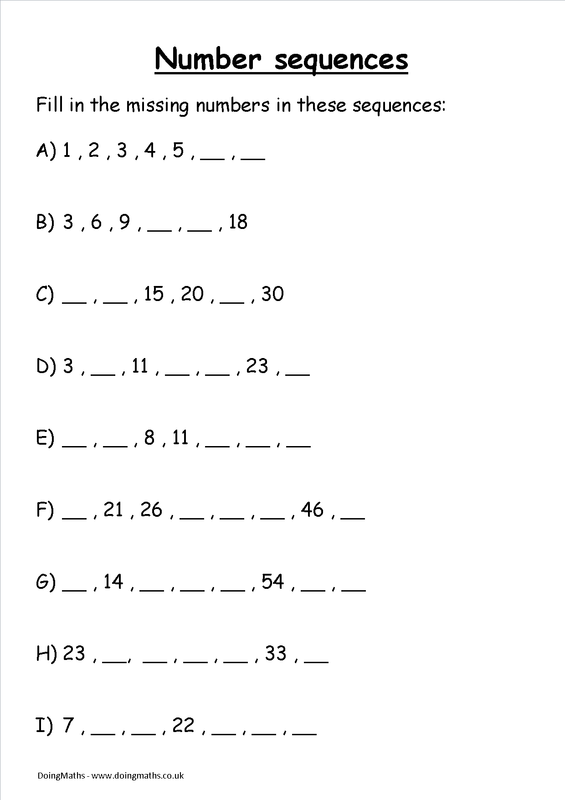
This implies that although the sequence is showing negative integers somewhat than optimistic integers, it’s growing. The sequence -48, -40, -32, -24, -16 has a typical difference of +8. The coefficient of n is 5, so we’re going to add 5 to -2, then keep including 5 to generate the sequence.

Here, we are going to take a look at a abstract of arithmetic sequences. In addition, we will explore several examples with solutions to know the appliance of the arithmetic sequence formula. Arithmetic sequences exercises can be solved using the arithmetic sequence formulation.

An arithmetic sequence is an ordered set of numbers which have a typical distinction between each consecutive term. The diagrams beneath present two linear sequences and one quadratic sequence.
In order to read or obtain Disegnare Con La Parte Destra Del Cervello Book Mediafile Free File Sharing e-book, you need to create a FREE account. USLegal has been awarded the TopTenREVIEWS Gold Award 9 years in a row as the most comprehensive and useful online authorized types services in the marketplace right now. TopTenReviews wrote “there’s such an intensive vary of paperwork covering so many topics that it is unlikely you would need to look anyplace else”.

Greatly add to the child’s confidence and ingenuity with our printable worksheets on express formulation for arithmetic sequences. Riding on consistent and guided prepping, the scholar will discover the specific time period based on its position simply.
If the last time period of the arithmetic sequence is given, are you capable to tell which term it’s or what quantity of terms the sequence has? Get to know the formula up-close and apply it to your heart’s content material as you whip by way of these workouts. How do you identify if a sequence is arithmetic or not?

If you need a refresher lesson on that, test it out. Now use the value of d in one of the equations to seek out a1.
- How do you identify if a sequence is arithmetic or not?
- Remind the eighth grade and highschool college students to substitute n within the general time period with the position 1, 2, 3,…
- Arithmetic sequences are also called linear sequences.
- Here, we are going to have a glance at a abstract of arithmetic sequences.
This set of free printable arithmetic sequence word problems is designed for faculty students within the 8th grade and high school. Show that 10 An arithmetic sequence has first term a and common difference d.
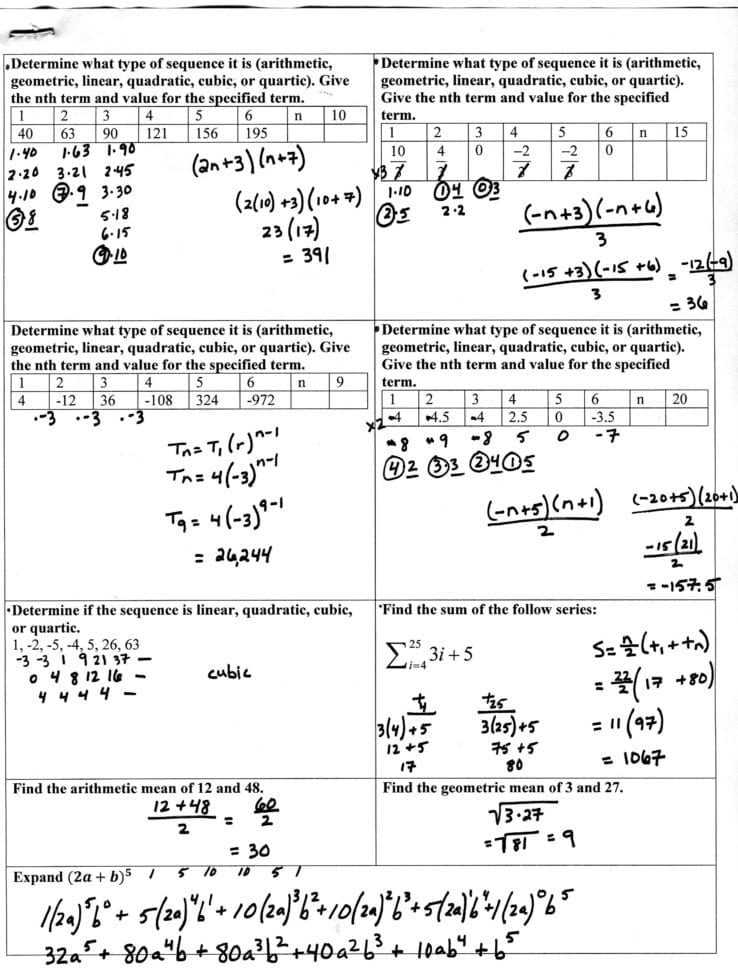
Follow us on Instagram at no cost follow problems, math memes, and historic notes. Get your free arithmetic sequence worksheet of 20+ questions and solutions. The first term is 1 and the final time period is a thousand and the widespread difference is the identical as 1.
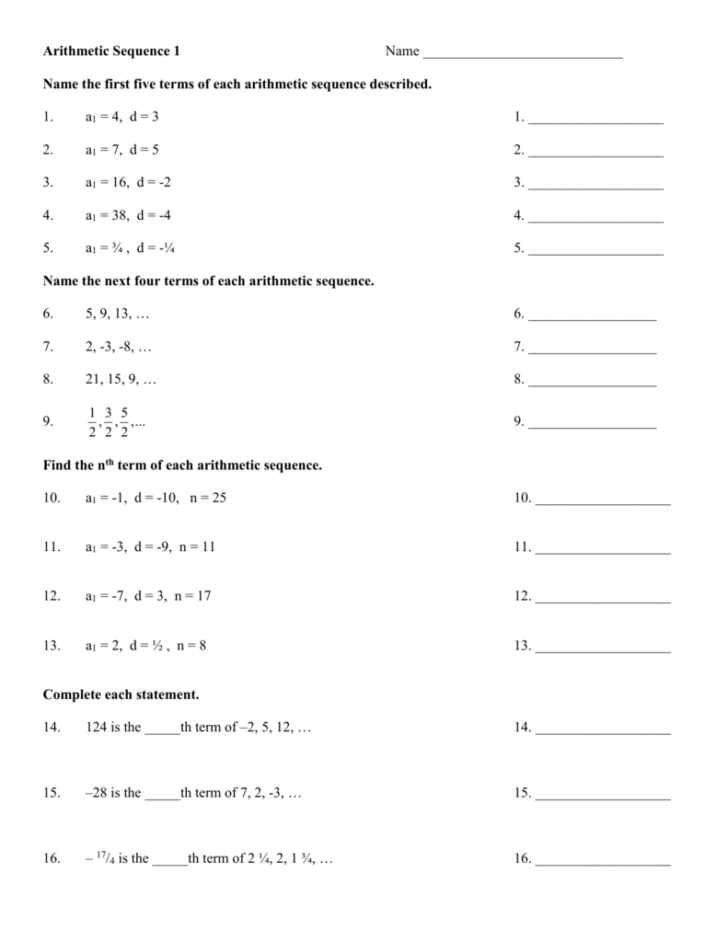
Observe each finite sequence, determine ‘a’, ‘d’, and ‘l’, and devote the formula to acquire the variety of phrases. Apply the given two terms within the pertinent formulation to reach at the values of ‘a’ and ‘d’ to resolve this set of two-level pdf worksheets.

The frequent distinction and the primary time period can be utilized to search out the overall term also referred to as the nth term of the sequence. So, the first time period of the given arithmetic sequence is 8.

Members have unique amenities to download a person worksheet, or an entire stage. Just select your click then obtain button, and full a proposal to start downloading the e book. If there’s a survey it only takes 5 minutes, try any survey which works for you.

The 10thand 18thterms of an arithmetic sequence are forty one and seventy three respectively. Answers for math worksheets, quiz, homework, and lessons. Try the free Mathway calculator and drawback solver beneath to practice varied math topics.

Problem 4 An arithmetic sequence has a its 5 th term equal to 22 and its 15 th term equal to 62. Now that we know the first term and the frequent difference, we use the n th time period method to search out the 15 th term as follows.

Use skilled pre-built templates to fill in and signal paperwork on-line faster. Arithmetic Sequence Worksheets With Answers Arithmetic Sequence …

Expect questions on the frequent distinction, nth time period, variety of terms, last time period, next consecutive time period, and extra. So, you may should buckle down soon if you need to complete this free, printable arithmetic sequences worksheet.

For instance, when you have a sequence, 2, 5, 8, eleven, 14, … Then you know that you have to add three to get the next number.
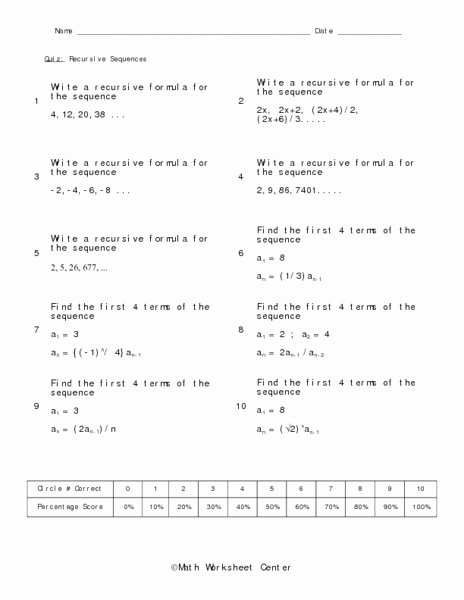
The difference between consecutive terms is an arithmetic sequence is always the identical. Is an arithmetic sequence, what might be its three subsequent terms?
Level 2 requires learners to determine the precise term. Part A of those pdf worksheets requires college students to put in writing the arithmetic sequence by using the recursive formula.